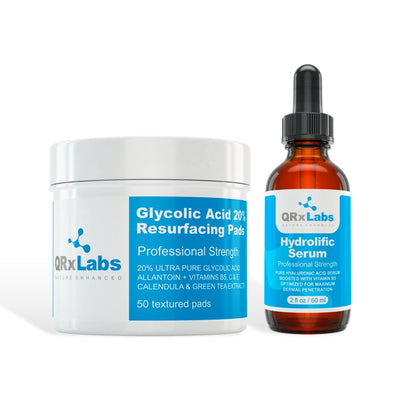Hydrating VS Moisturizing: What’s the Difference?
When it comes to skin care, the terms "moisturizing" and "hydrating" are often used interchangeably, but they actually refer to two different processes of caring for the skin. Understanding the distinction between these two can help you choose the best products for your specific skin needs. Here’s a closer look at what sets these two types apart and how to decide which is right for you.
What Does Hydrating Mean?
Hydrating products are formulated to increase the water content in your skin. These products are typically based on ingredients known as humectants, which include substances like hyaluronic acid, glycerin, and aloe vera. Humectants work by drawing water molecules into the skin cells, helping to plump up the skin and make it appear more dewy and youthful.
Ideal for: Individuals with dry or dehydrated skin will benefit most from hydrating products. Dehydrated skin, which differs from dry skin, lacks water and often feels tight and looks dull. If your skin often feels this way, consider incorporating a hydrating serum or gel into your routine to replenish moisture levels.
What Does Moisturizing Mean?
Moisturizing products, on the other hand, are designed to lock moisture into the skin and prevent water loss. These are typically richer and include ingredients like oils and butters, which are known as occlusives. They create a barrier on the skin’s surface that seals in moisture and the benefits of other skincare products you might have applied underneath.
Ideal for: Moisturizers are crucial for those with dry skin, which is characterized by a lack of oil. They are also beneficial in cold or dry climates where skin tends to lose moisture more rapidly. If you find that your skin often feels flaky or rough, a good moisturizer should be a staple in your skincare arsenal.
Emollients: The Bridge Between Hydration and Moisture
There’s also a third category that often gets mentioned in discussions about moisturizing and hydrating: emollients. Emollients, such as squalane and ceramides, help to smooth and soften the skin by filling in gaps between skin cells. They are often included in both moisturizing and hydrating products to improve the texture and appearance of the skin.
Choosing Between Hydrating and Moisturizing Products
The choice between hydrating and moisturizing products ultimately comes down to understanding your skin’s specific needs:
- For dehydrated skin: Focus on hydrating products. These will help address the lack of water in your skin and can be used in combination with moisturizers to achieve balanced skin hydration.
- For dry skin: Lean more towards moisturizing products that will help seal in moisture and protect your skin from environmental factors.
- Combination or oily skin: Even oily skin needs hydration. Lighter hydrating products that don't add extra oil can help maintain skin health without contributing to oiliness.
Why Not Both?
For many people, the best approach is a combination of both hydrating and moisturizing products. Applying a hydrating serum followed by a moisturizer can provide the benefits of both increased water content and a protective barrier to keep it locked in. This combination can be particularly effective in keeping your skin looking healthy and radiant.
Understanding the difference between moisturizing and hydrating can transform your skincare routine and help you make informed choices about the products you use. By choosing the right type of product for your skin’s needs, you can maintain balanced, healthy skin regardless of the season or your skin type.














